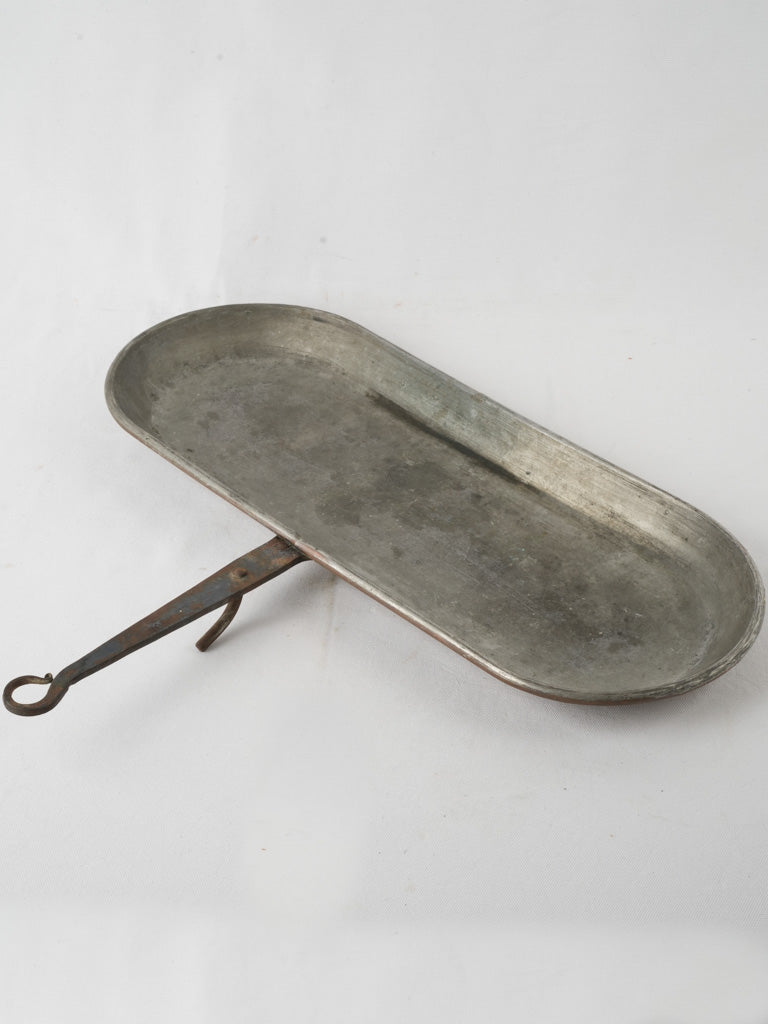
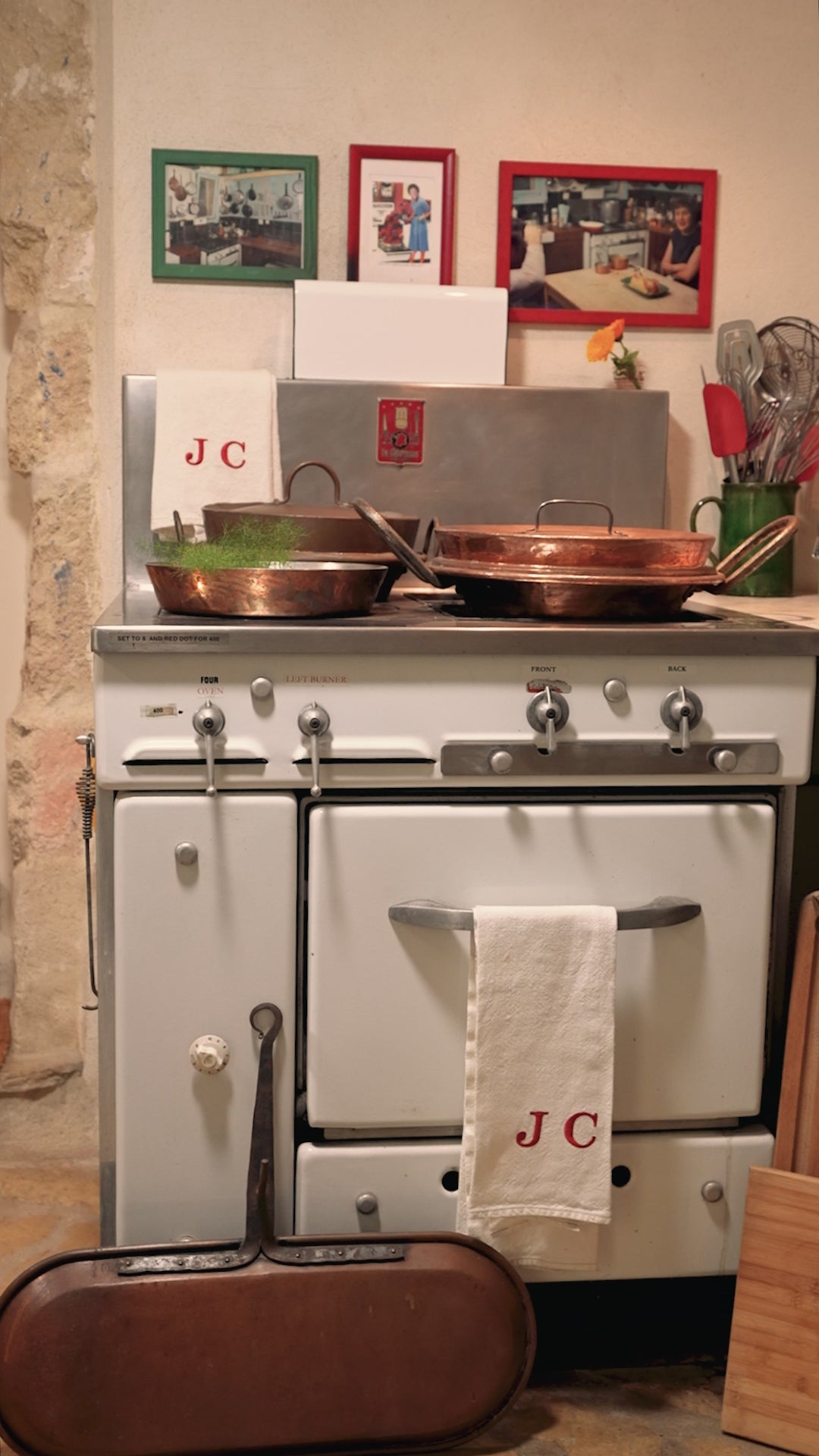
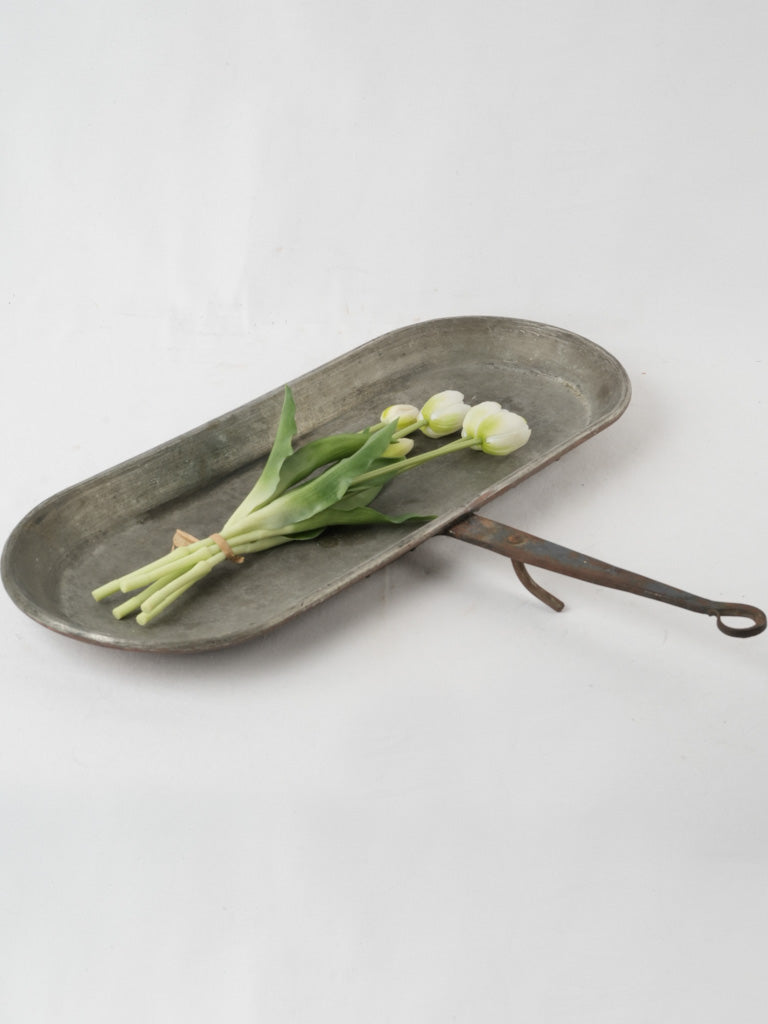
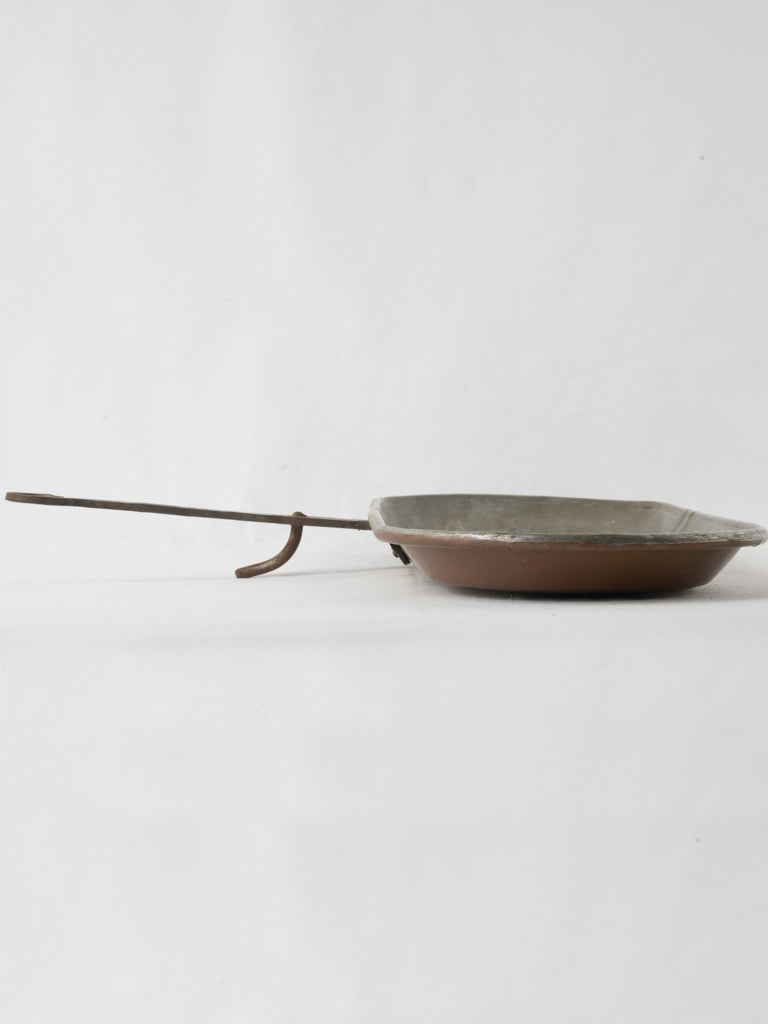
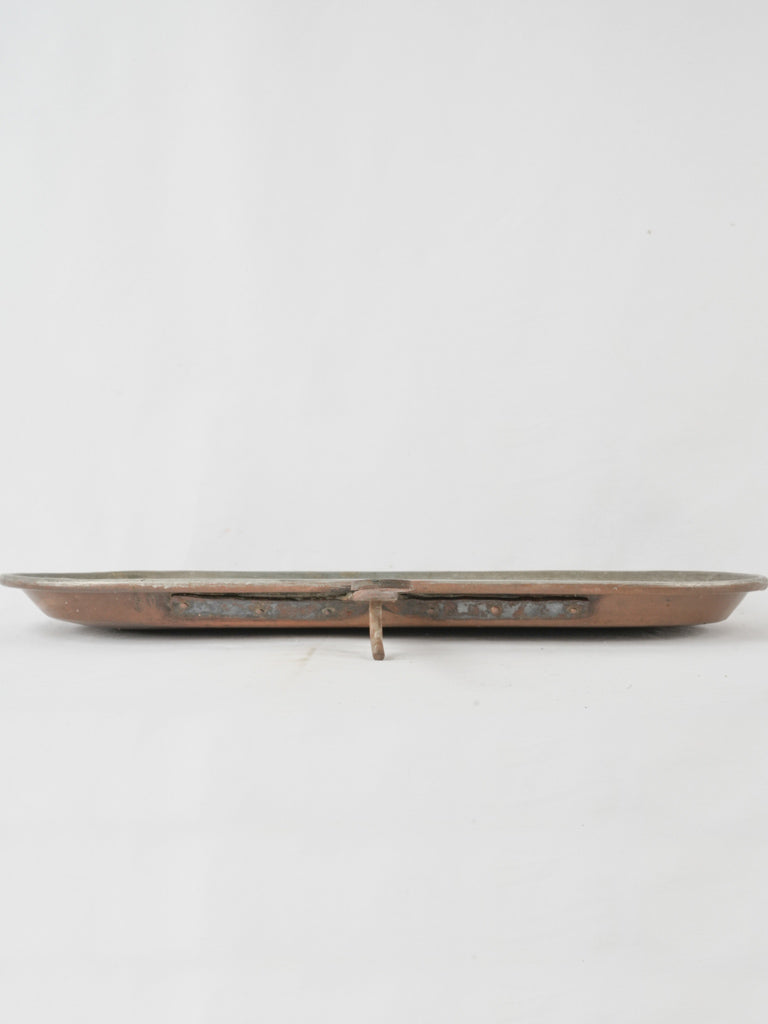
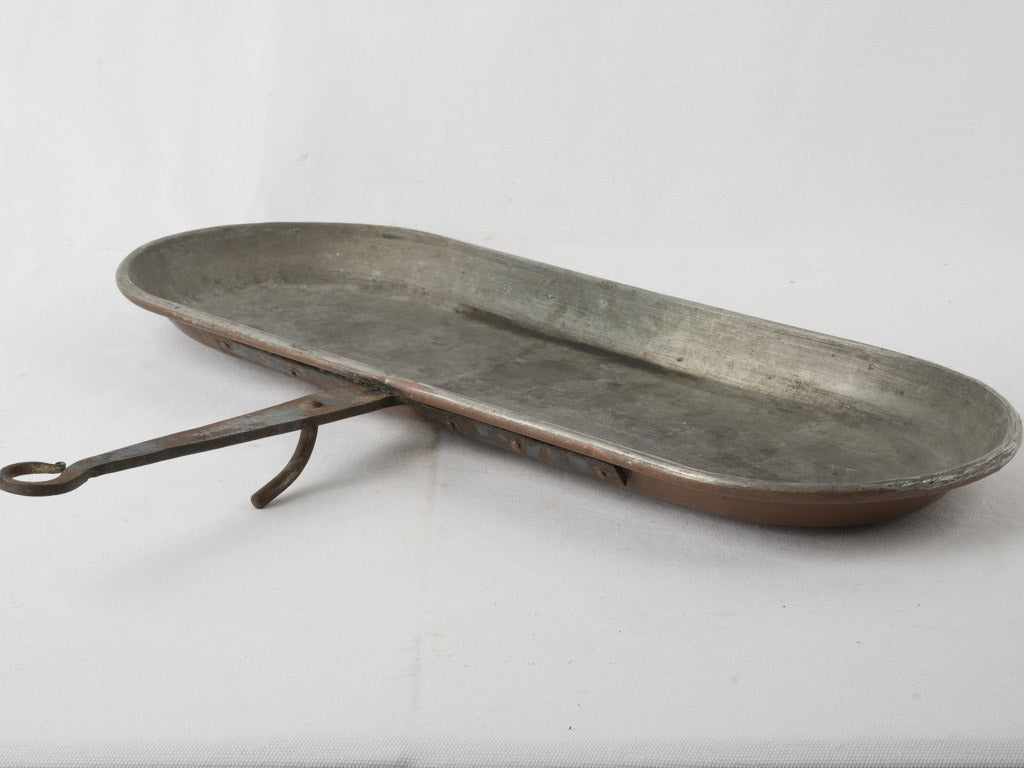
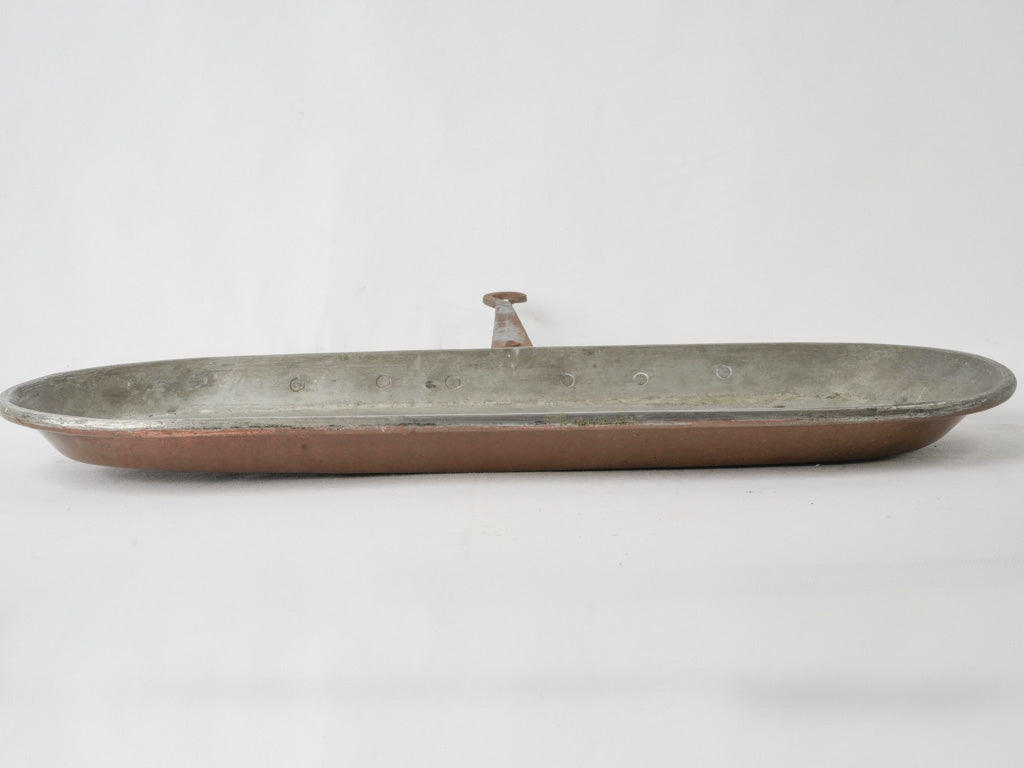
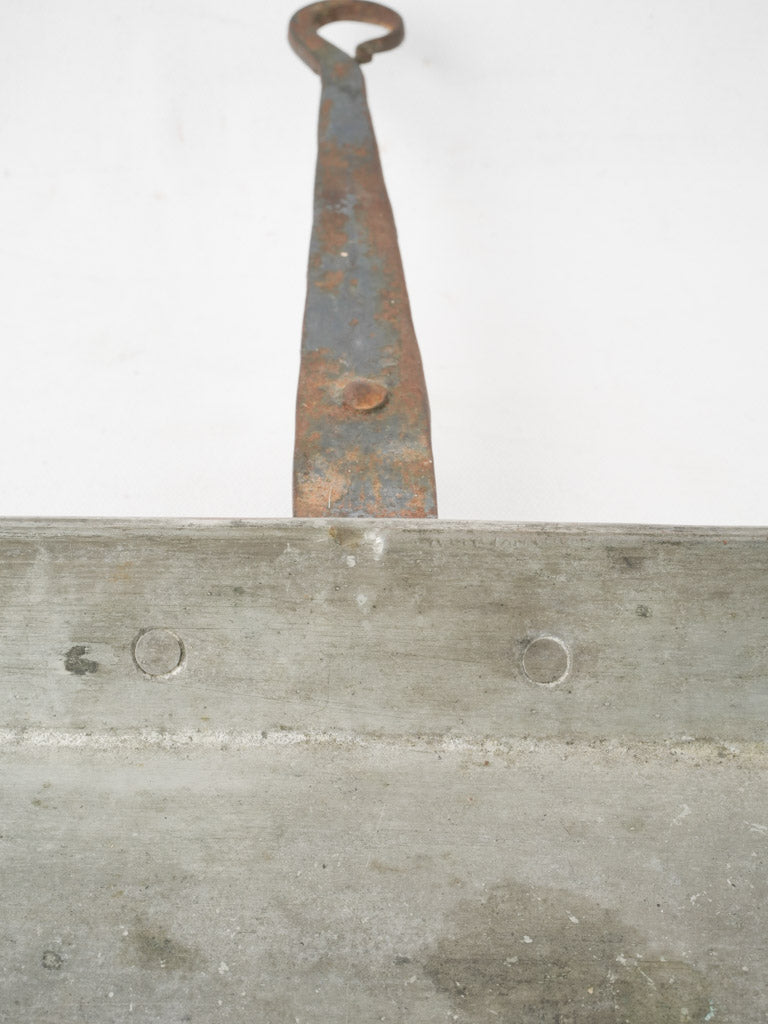
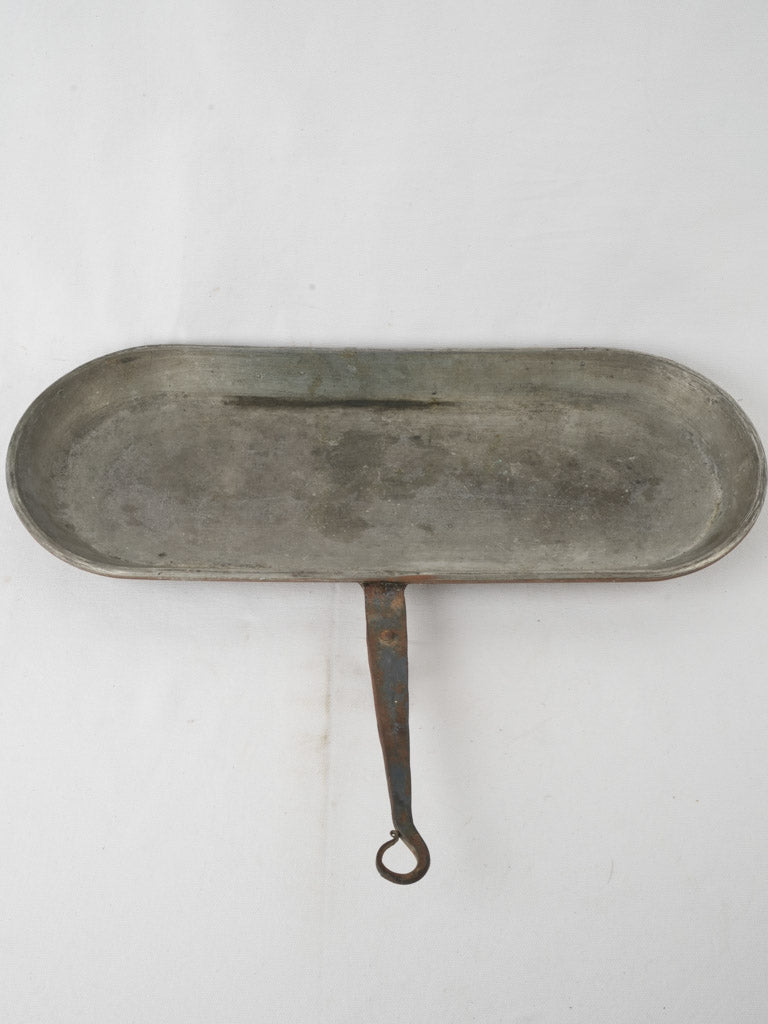
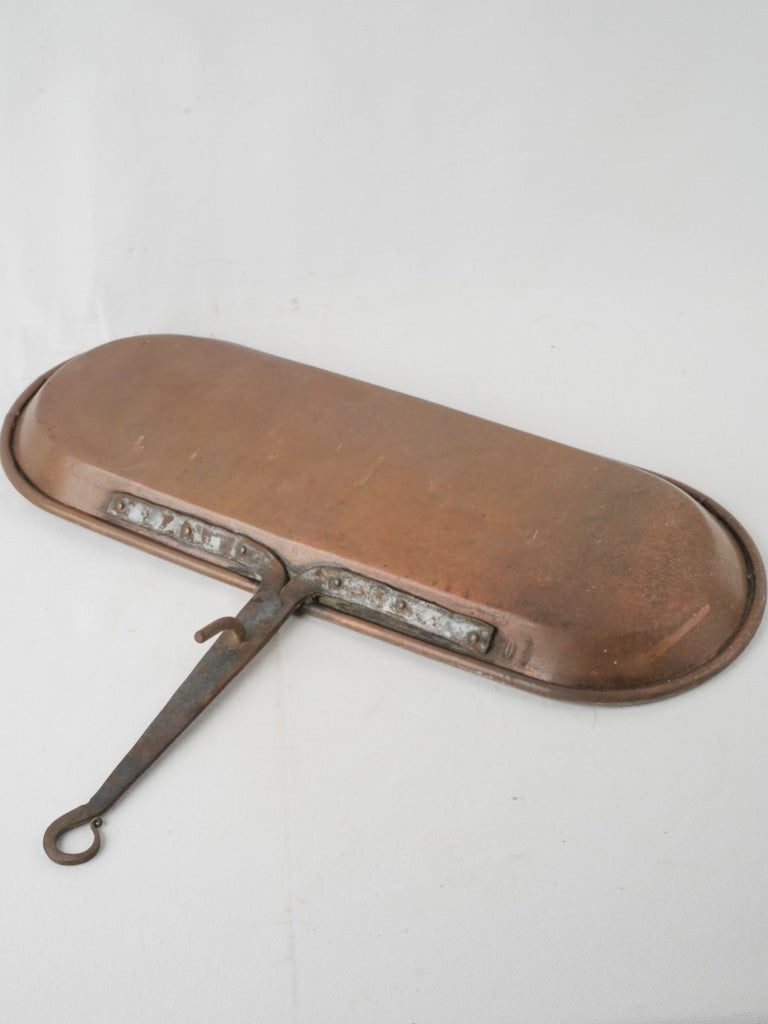
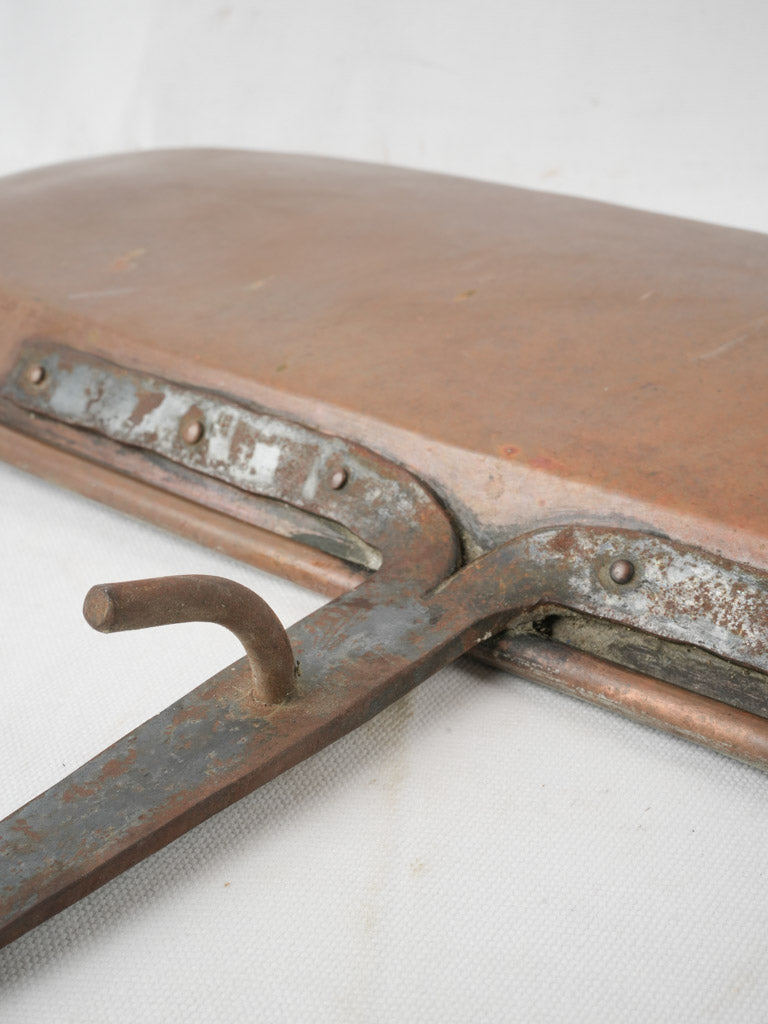
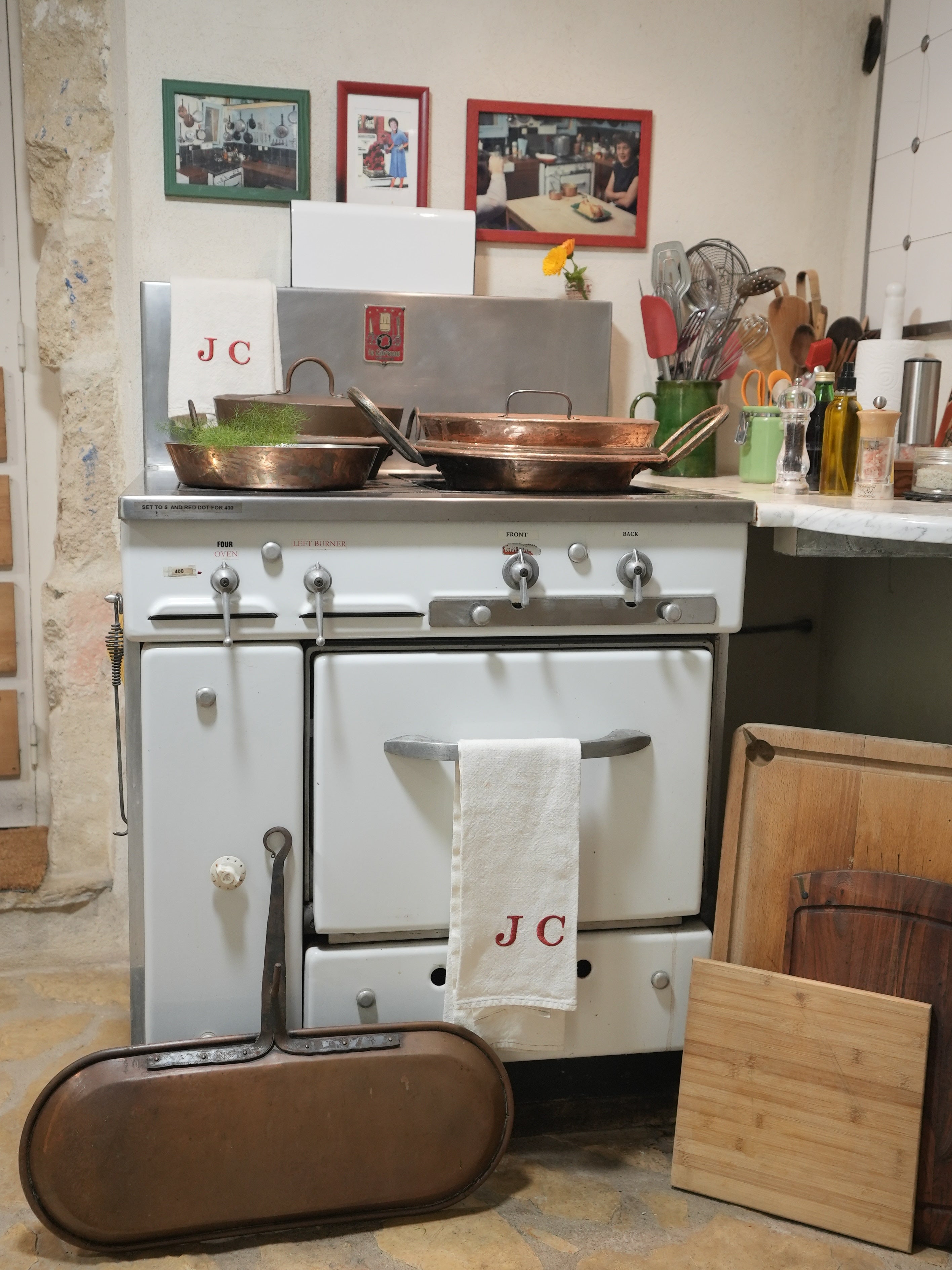
Large antique copper lechefrite w/ perpendicular handle 23¾"
All inclusive pricing to USA
The price includes duties, taxes, tariffs and shipping. No more to pay for destinations within the US.
A large 19th-century "lechefrite" copper pan from Patricia Wells' kitchen in Provence. Patricia chooses copper for its superior heat distribution and regularly has them re-tinned as she wears them out!
A "lechefrite" is a type of shallow roasting pan, often made of copper. The name comes from the French word "lèchefrite," which translates to "lick the gravy," a nod to its function in cooking. These pans are designed to collect the juices that drip from meat while it is roasting. The juices gathered in the lechefrite are typically used to make gravies or sauces, enhancing the flavors of the roasted meats.
Copper is a preferred material for a lechefrite because it conducts heat excellently, providing even cooking and helping to roast meat more efficiently. The shallow design of the pan also allows heat to circulate freely around the meat, which aids in even browning and crisping.
In practice, a lechefrite is placed under the roasting rack holding the meat, either directly under it in the oven or in a separate compartment if the oven design allows. As the meat cooks, fats and juices drip into the pan, and these can be basted onto the meat during cooking to keep it moist or used afterwards to prepare accompanying sauces.
Condition and wear consistent with age and use.
Approx. overall 19¾" long w/ handle, pan 23¾" x 9¾" x 2" deep
Approx. overall 50cm long w/ handle, pan 60cm x 25cm x 5cm deep
Choose options












Large antique copper lechefrite w/ perpendicular handle 23¾"
Sale priceUS$1,580

